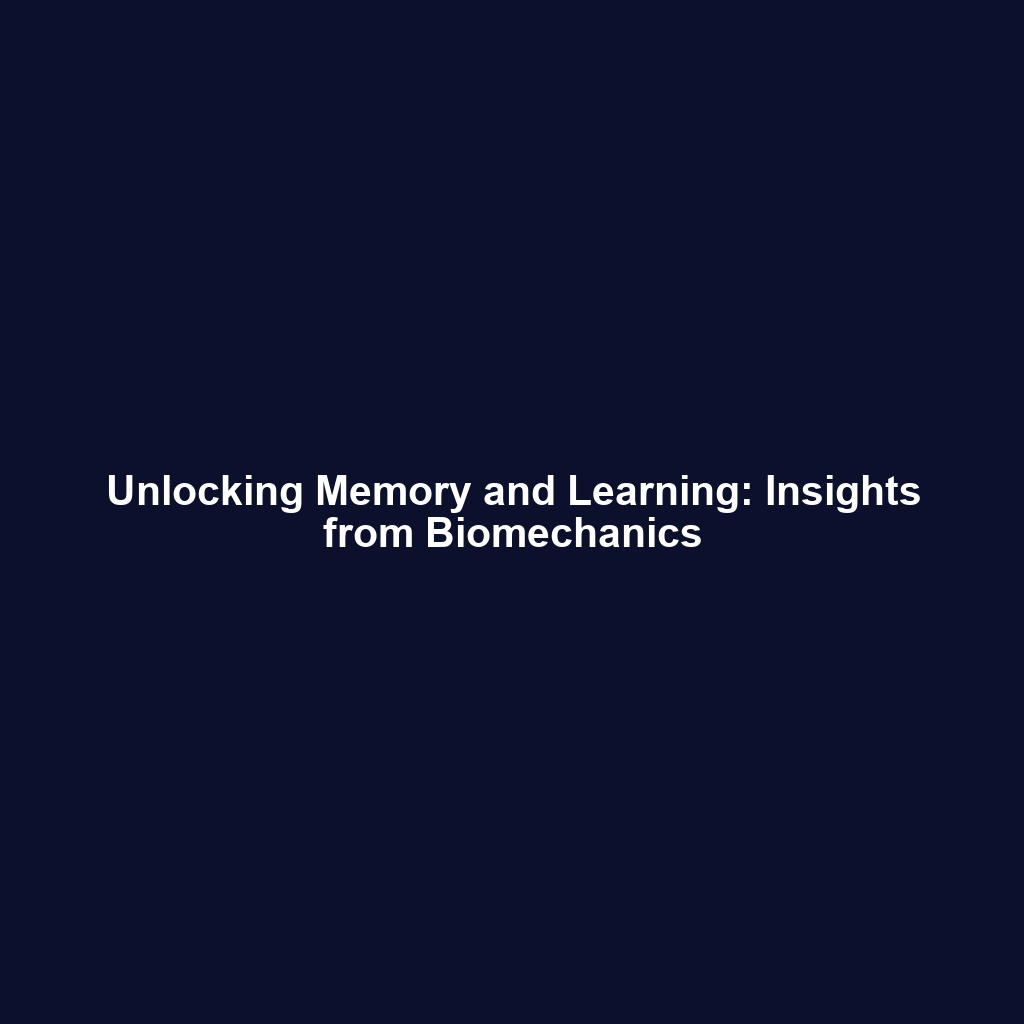Memory and Learning in Biomechanics
Memory and Learning are critical processes that influence human behavior, movement, and performance. In the realm of Biomechanics, understanding how these cognitive functions operate is essential for enhancing physical capabilities, rehabilitation strategies, and injury prevention. The interplay between memory, learning, and biomechanical principles provides insights into improving sports performance, designing effective training regimens, and developing assistive technologies to support individuals with movement disorders.
Key Concepts of Memory and Learning
Memory involves the encoding, storage, and retrieval of information, while learning refers to the adaptation of behavior based on experience. In the context of Biomechanics, these concepts encapsulate several key principles:
- Motor Learning: The process of improving motor skills through practice and experience.
- Cognitive Load Theory: Understanding the mental effort involved in learning new movements can optimize training strategies.
- Association and Reinforcement: Techniques to enhance memory retention for complex biomechanical tasks, including feedback mechanisms.
Applications and Real-World Uses
The application of Memory and Learning in the field of Biomechanics is vast and impactful. Some notable examples include:
- Rehabilitation Programs: Utilizing learning techniques to program neuromuscular responses in rehabilitation exercises.
- Coaching and Training: Implementing principles of motor learning in sports coaching to enhance athletes’ performance.
- Assistive Devices: Designing biomechanical devices that adapt based on the user’s learned behaviors for improved mobility.
Current Challenges
Despite advances in the study of Memory and Learning, several challenges remain within the scope of Biomechanics:
- Individual Variability: Differences in learning rates among individuals can complicate standardized training approaches.
- Integration of Technologies: Difficulty in effectively incorporating cognitive training tools with traditional biomechanical assessments.
- Long-Term Retention: Understanding how to ensure that learned motor skills are retained over an extended period.
Future Research and Innovations
The future of Memory and Learning in Biomechanics promises exciting advancements, including:
- Neuroplasticity Research: Investigating how the brain’s adaptability can be harnessed for enhanced motor learning.
- Wearable Technology: Development of smart devices that provide real-time feedback and adaptive learning experiences.
- Virtual Reality: Utilizing VR environments to create immersive learning experiences that enhance motor skill acquisition.
Conclusion
In summary, Memory and Learning play a pivotal role in Biomechanics, influencing everything from athletic performance to rehabilitation techniques. As research continues to evolve, the integration of cognitive and physical training principles will be crucial for maximizing human movement capabilities. For further reading on related topics, consider exploring our pages on Sports Performance and Rehabilitation Techniques.
